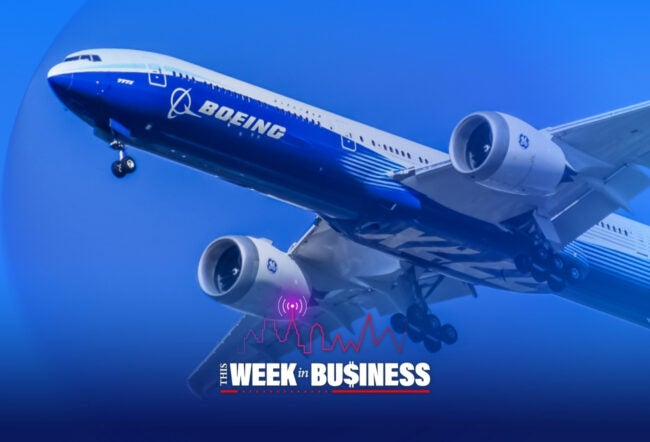The Importance of Procurement in a Global Environment
Until recently, procurement was a necessary, but seldom celebrated, component of multinational corporations. But times have changed: These days, procurement organizations within companies are playing pivotal roles in the success of global firms in ways that old-fashioned purchasing managers could never have imagined. In this special report, Wharton faculty and procurement experts at The Boston Consulting Group discuss why the procurement function has risen to such prominence in a highly competitive global environment, and how, as supplies of critical commodities tighten and prices rise, companies can strategize to mitigate these and other risks.
Part 2: Challenges Facing Procurement Organizations
Procurement has become an integral part of corporate performance and is drawing increased attention from senior management. In this interview, Andreas Gocke, a BCG partner and managing director, spoke with Knowledge at Wharton about the most critical challenges facing procurement organizations over the next five to 10 years, including training and employee development, managing global sourcing offices and ensuring collaboration across corporate departments.
Knowledge at Wharton: Can you talk a little bit about the biggest challenges that procurement organizations face today?
Gocke: BCG did a procurement roundtable with about 30 European CPOs. We did a quick survey about the most challenging topics for the next five to 10 years. Surprisingly enough, people — training and development — was the number-one topic as the key challenge for procurement organizations. That includes: skill development; the right recruiting and retention practices; and career paths in other functions outside of procurement.
Number two was also related to organizational aspects. It was the organization of global sourcing. That is, how to set up and how to manage global sourcing offices. That is also more in terms of processes, a linkage between the global sourcing offices and the headquarters. It’s also how the global sourcing offices do work with other non-procurement functions.
And number three is cross-function and collaboration. That is, how does procurement work with not only engineering and quality management — which has been the nature of the procurement department for a long time already — but also with other functions like sales and marketing when it comes to requirements management? That’s also with finance and controlling, and that’s also with logistics and supply chain management.
These are the top three: people training and development, global sourcing organization, and cross-function and collaboration.
Knowledge at Wharton: Are those three much different from the challenges that faced procurement people 10, 15 or 20 years ago?
Gocke: I would say that 10 or 15 years ago, procurement was still fighting for, let’s say, organizational significance. Have they listened and do they have the right organizational position? In most organizations we see right now, this point has been reached already.
There’s not so much a challenge anymore for procurement to be accepted as a strategic business partner inside the organization or to be accepted as the adding-value partner in the organization. So now it’s more how to move forward in this significant strategic position inside an organization.
The war for talent [is seen] in all three regions, by the way. It’s not only a European or an American issue. “People, people, people” will also face the procurement department, for sure.
Knowledge at Wharton: You mentioned a moment ago that procurement has become more accepted as an integral part of organizations. Therefore, it seems like it’s more strategic than ever. Can you talk a little bit about the reasons why that’s the case?
Gocke: If you look into major global corporations’ profit and loss accounts you see the answer already. The share of material costs and the share of purchased services are growing continuously. We have some comparisons. What kind of external delivery for automotive OEMs, for instance, is like that — the pacesetter of these developments [over] the next couple of years? The ratio is between 5% and 10% in absolute terms per annum over the next couple of years. That’s a very quantitative aspect. But if you see the qualitative aspect as well, sourcing now also becomes the gatekeeper for supplier innovation….
The technology competence with suppliers is growing more and more. You can easily measure it by the number of patents which are applied for in many industries. And even in the customer organizations, the supplier will influence our technological development more and more. Therefore, sourcing will be the organizational unit which will manage these aspects.
Knowledge at Wharton: If procurement is becoming increasingly important and strategic, getting back to something that you mentioned, which was retention and development of key people in this area, where are organizations finding the best people? How do they go about doing that and is it a difficult task?
Gocke: This is one of the key questions where we need to confess to not having the right answer yet. CPOs don’t have the answer either. Unlike most other functions, there is not the academic purchasing manager education. You don’t find, or very seldom find, a master education in purchasing. Very few universities around the world really focus and specialize on purchasing as an education path by itself.
So, we are working with our clients to develop those career paths by themselves. They cannot wait for the outside world. They need to develop it internally by setting up career paths across different functions, by setting up education programs for hard skills — language, engineering, etc. — and also soft skills, which are becoming more and more important, like project management, working in different cultures, and working in different business contexts. These skills need to be developed by your own organization. Don’t wait for the outside world to support you on this.
Knowledge at Wharton: And because global sourcing is the second of those three important topics that were discussed at the summit that you talked about a little while ago, it would seem that the type of people that would be best suited for global sourcing would be people with the kind of skills that you just mentioned also a moment ago.
Gocke: Yes, and I would even stress that they have additional skills…. If you need to set up a global sourcing office somewhere in China or in India, it’s more entrepreneurial groundwork, so to speak. And the people there need to be much more like entrepreneurs. They need to improvise.
They need to bridge their home organizations — their headquarters — with their local supplier markets. So the intercultural management skills … are regarded as even more important than that of a domestic purchasing manager.
Knowledge at Wharton: Is being a purchasing manager — or a chief procurement officer, or whatever the organizational title happens to be — a good career path for those people? If procurement is increasingly important, is it a good idea for people to seek those jobs out, if they think that they can do well at them?
Gocke: In terms of status quo, I would be honest and rather critical. In terms of potential, I would be very positive. Let me just talk about the status quo and those managers who traditionally are in sales and marketing. Those who contribute to the top line are still regarded as contributing the most to corporate success.
Those who improve the bottom line [with things like] cost improvements [and] volume reduction … still have less of a reputation [for] contributing to corporate success. This is changing. As I mentioned in my answer five minutes ago, as purchasing becomes more and more the gatekeeper for innovation of suppliers, for instance, this innovation some time later will result in additional sales.
Suddenly, you have a bridge from supplier — his innovation power — bringing this innovation power into the customer organization, thereby developing more and more to customers’ innovation and thereby contributing to our own corporate success on the top line. So, suddenly purchasing not only becomes a bottom line impact, but also a top line impact, and at this moment the sales purchasing manager has a huge potential.
We see that also reflected in the corporate organizations. More and more organizations in the automotive industry, which is like the front runner in this dimension, have a CPO function on the board level. That had not been the case some 10 or 15 years ago. In most organizations, the CPOs reported either to the chief technical officer, the chief engineering officer, the COO, or the CFO. Now we see that the CPO has his own position in the organization.
Knowledge at Wharton: Let’s address the issue, if we can, about the importance for procurement to work in tandem with other functions in the company. Could you say that at one time procurement was more of a standalone kind of operation, off to the side, and that it’s more integrated today? Would that be accurate?
Gocke: It depends. If we see the history of purchasing then that would give you a kind of maturity progress. And when we see different organizations across history, we see six different steps. The first step was [something] like “Serve the Factory,” if you call that the theme. Purchasing was more in clerical and logistics activities, so these skills were requested.
The next step was more like reaching the lowest unit cost. Call this theme, “Lowest Unit Cost.” Here the purchasing organization was [focused on] pushing and pressing the supplier, and negotiating tasks, and that was sufficient enough. Suddenly, [we had] the third step — we will call this theme, “Coordinated Purchasing.” Sourcing needed to have the input of other functions to make the supplier-customer relationship better.
In the fourth step, we had the theme “Cross-Functional Purchasing,” which is what you asked about. Suddenly, the purchasing department was an equal part across different functions, in which all contributed to the corporate success. Each function was dependent on the other, especially technical improvement leaders like make or buy; like standardization; like design to cost and process improvement leaders; [and] like demand bundling. So, to enable those leaders, you need to have cross-functional work, where purchasing is across engineering, quality management, and sales/marketing.
The fifth step is “World-Class Supplier Management,” and here you have even more of an intercultural aspect. And, the sixth step, which we regard as the highest aspirational level, is “Entrepreneurial Purchasing.” And with entrepreneurial purchasing, purchasing behaves like a cost and profit center as well.
And so, they are building up supplier networks by themselves. They are offering supplier networks to the rest of the organization. They bring in ideas. They are the gatekeepers of suppliers’ ideas into the organization. So, purchasing is not reacting to the organization demand, but it is vice versa. Sourcing brings in its own initiatives and thereby triggers the rest of the organization.
Knowledge at Wharton: That’s a very important point. A few minutes ago, you mentioned again as one of those important themes that emerged from your meeting on global sourcing: Does global procurement, in your view, demand any special skills or organizational needs?
Gocke: Yes, and I think that’s the reason why many organizations … are not where they want to be with regard to global sourcing. Global sourcing is not just identifying the Chinese supplier in mainland China, signing the contract, and that’s it. It’s the need to change the entire sourcing process.
What do I mean by that? If you are really taking global sourcing seriously, you need to sometimes extend your development process to allow a longer screening phase from your suppliers, to allow longer trial periods with new suppliers, etc. If you don’t reflect that in your incumbent processes, you will not have success with global sourcing.
And this also then comes into play for the need in the organization to reflect those requirements in terms of processes. So you need people and also departments who know how to deal with those challenges. For a global sourcing organization you need to ensure that the global sourcing offices around the world have equal power with their, let’s say, competitors inside the headquarters organization which do domestic or just regional sourcing.
You sometimes need to have more resources because you need to write specifications sometimes in the language of the global sourcing country, like Chinese. In India it is mostly English, but in China, it’s a huge challenge. Eastern Europe is also a huge challenge. You need maybe more resources in terms of supplier qualification management. So in terms of skills, resources, and new processes, organizations need to learn more.
Knowledge at Wharton: You’re based in Munich, Germany. Do you see any significant differences between the way companies in Europe and companies, say, in North America approach the whole topic of purchasing?
Gocke: Yes, in maybe two dimensions, I would say. For the first dimension, I’m rather sure. The second one is still at the hypothesis level. The first one is the openness toward global sourcing, since Europe has its global sourcing market directly next door, which is Eastern Europe. And let’s say Western Europe [has become] used to working with Polish, with Czech, and also with Turkish suppliers [over] the last 30 and even 50 years. It’s still a huge challenge to expand this global sourcing level toward Asia.
And that’s the big difference with U.S. purchasing organizations. They might have a link toward Mexico in the NAFTA region. But this is not comparable to dealing with 10 to 12 different Eastern European countries — including Turkey — and then [expanding to] 13 or 14 countries. This is the difference.
Number two is that there might be a slightly different understanding in terms of supplier-customer relationship management in Europe compared to the U.S., especially with the automotive industry. The openness for more trustful supplier-customer relationships is slightly higher and more developed in Europe.
But we see that the “Big Three” in Detroit are also opening up more and are seeing some successful models in Europe. They have learned that they cannot rely on those supplier-customer relationships which are doomed to fail because they are just built on market power.
That will not be successful and the result, unfortunately, is that many tier one suppliers are close to bankruptcy and are not managed well. There needs to be, I would even say, a turnaround management for most of the relationships.
Knowledge at Wharton: Well, from everything that you have discussed today, it certainly sounds as if purchasing will only become more important in the years ahead, for organizations of all kinds.
Gocke: Yes,I’m pretty sure of this. The technology industry and the automotive industry — I think they have already put sufficient emphasis on the procurement organization, and their reputation is higher. As I mentioned, we have a CPO on the board level. We have cross-functional teamwork. We have more and more sophisticated supplier-relationship management tools and also processes.
And now [it’s spreading] to other industries as well, like the machinery industry and also the utilities-supplier industry. So, I definitely agree with your observation that purchasing will become more and more relevant in strategic function.



